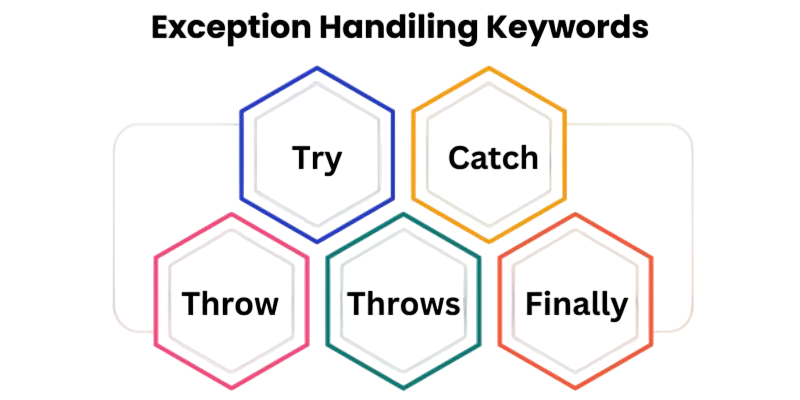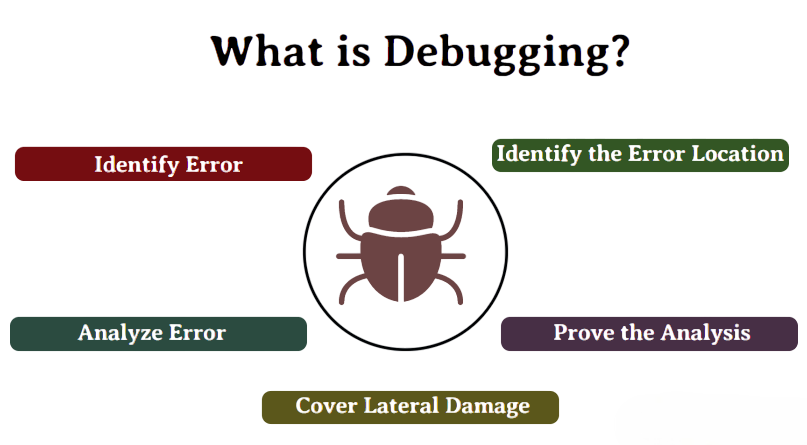
- What is Socket Programming in Java?
- Basics of TCP/IP Protocol
- Java.net Package Overview
- Creating a Server Socket
- Creating a Client Socket
- Sending and Receiving Data
- Multi-threaded Socket Programming
- Handling Exceptions
- Use Cases (Chat App, File Transfer)
- Security in Socket Programming
- Debugging Tips
- Conclusion
What is Socket Programming in Java?
Socket Programming in Java is a powerful feature in Java that enables communication between different applications or between different parts of the same application, whether on the same machine or over a network. It is widely used in applications such as chat systems, online games, and file transfer tools. Socket Programming in Java allows a server and one or more clients to communicate through a well-defined interface. To explore how this communication model scales across real-world systems, diving into Java Training reveals how developers implement socket-based networking, manage concurrency, and build responsive, distributed applications across the full Java stack. Socket programming refers to writing programs that use sockets to communicate over a network. A socket is an endpoint for sending or receiving data across a computer network.
To Earn Your Java Training Certification, Gain Insights From Leading Web Developer Experts And Advance Your Career With ACTE’s Java Training Today!
Basics of TCP/IP Protocol
Socket communication typically uses the TCP/IP protocol suite, which is the foundation of the internet. TCP (Transmission Control Protocol) ensures reliable communication by establishing a connection and maintaining the order of data packets. IP (Internet Protocol) handles addressing and routing. To implement these protocols efficiently in modern systems, exploring Go Programming Language reveals how Go’s built-in networking libraries and concurrency model simplify the development of scalable, high-performance network applications. Together, TCP/IP guarantees that data sent from one computer arrives at the correct destination without errors or duplication.
Java.net Package Overview
Java provides a set of classes and interfaces in the java.net package to support socket programming. The key classes include: Socket, ServerSocket, and DatagramSocket. To understand how similar functionality is scoped and managed in Python, exploring Python Scopes and Their Built-in Functions reveals how Python handles variable visibility, function encapsulation, and modular design enabling developers to build clean, maintainable network applications.
- Socket: Used by the client to establish a connection with the server.
- ServerSocket: Used by the server to accept incoming client connections.
- InetAddress: Represents an IP address.
- DatagramSocket and DatagramPacket: Used for UDP communication.
These classes abstract many of the low-level details, making it easier to write robust networking applications in Java.
Would You Like to Know More About Java Training? Sign Up For Our Java Training Now!
Creating a Server Socket
To create a server socket in Java, the ServerSocket class is used. The server listens on a specific port for incoming client connections. Here’s a simple example: to understand how similar networking logic is expressed in Python, exploring Python String Formatting reveals how developers structure output, embed dynamic values, and format messages for clean, readable communication between server and client.
- ServerSocket serverSocket = new ServerSocket(5000);
- Socket socket = serverSocket.accept();
The accept() method waits for a client to connect and returns a Socket object to communicate with the client. This design allows the server to listen indefinitely for incoming connections.
Creating a Client Socket
To connect to a server, the client uses the Socket class. The client must know the server’s IP address and the port number where the server is listening. For example, the client might use the line of code: Socket socket = new Socket(“localhost”, 5000);. This line tries to create a new socket connection to the server on the same machine at port 5000. Once the connection is successfully made, the client and server can communicate. To understand how such socket-level interactions scale in enterprise systems, exploring Java Training reveals how Java developers implement reliable networking, manage concurrent connections, and build distributed applications across the full stack. They do this through input and output streams linked to the socket.
Are You Interested in Learning More About Java Training? Sign Up For Our Java Training Today!
Sending and Receiving Data
In Java, sockets enable communication through InputStream and OutputStream, letting data flow between a client and a server. To send information, use the output stream, which you start with `DataOutputStream out = new DataOutputStream(socket.getOutputStream()); . To receive messages, you set up the input stream as DataInputStream in = new DataInputStream(socket.getInputStream());. For example, you can send a message like this: out.writeUTF(“Hello Server”);, and then read the server’s response with String response = in.readUTF();. Remember to close both streams and the socket after your communication is complete. To preserve and transmit structured data during such interactions, exploring Python Serialization reveals how Python enables object encoding, stream management, and data persistence making it easier to maintain state and share information across networked applications. This step ensures that resources are released properly and helps prevent memory leaks or connection problems. Keeping the communication process efficient and clean is important for maintaining a stable application.
Multi-threaded Socket Programming
In real-world applications, servers need to handle multiple clients simultaneously. This can be achieved by using multithreading. Each time a client connects, the server can spawn a new thread to handle communication with that client. To understand how such concurrency is managed in enterprise-grade systems, exploring What is .Net FrameWork reveals how the .NET environment supports multithreaded processing, asynchronous operations, and scalable server-side development.
- class ClientHandler extends Thread {
- private Socket clientSocket;
- public ClientHandler(Socket socket) {
- this.clientSocket = socket;
- }
- public void run() {
- // Handle communication
- }
- }
This approach ensures that multiple clients can interact with the server without interfering with each other.
Preparing for Java Job Interviews? Have a Look at Our Blog on Java Training Interview Questions and Answers To Ace Your Interview!
Handling Exceptions
When developing networking applications, it’s essential to handle exceptions well to keep a stable user experience. Common exceptions are IOException, UnknownHostException, and SocketTimeoutException. Using try-catch blocks around socket operations helps developers manage these exceptions and stops the application from crashing.

To ensure such error-handling practices contribute to robust software, exploring What is Quality Assurance reveals how systematic testing, validation, and exception management play a vital role in maintaining application stability and user trust. This method allows the program to recover from errors without showing confusing messages to users. It is also important to close sockets properly by placing the closing code in a finally block. This way, resources are released whether or not an exception happened. By following these best practices, you can create a strong networking application that handles errors effectively and offers a smooth experience for users.
Use Cases (Chat App, File Transfer)
Creating a mini e-commerce site is a great way to get into web development using just HTML and CSS. You can also add JavaScript for extra interactivity. Start your project with an attractive homepage that showcases a selection of products. Each product should have its own page that includes images, descriptions, and prices. As users browse your site, they can easily add items to their cart. To ensure your system can handle sudden surges in traffic during peak shopping periods, exploring What is Spike Testing reveals how developers simulate abrupt load increases to evaluate system stability, responsiveness, and scalability under stress. This will take them to a summary page where they can review their chosen products. Finally, include a simple checkout form to collect payment details. While this project does not include backend integration, it covers important concepts like linking pages, structuring layouts, handling images, and integrating forms.
Security in Socket Programming
Socket programming in Java can be used to develop a variety of real-time applications: from chat systems and multiplayer games to collaborative tools and live data feeds. To understand how mastering such backend skills impacts career growth, exploring Full Stack Developer Salary reveals how proficiency in networking, concurrency, and scalable architecture contributes to higher earning potential and job opportunities in the tech industry.
- Chat Application: Enables multiple users to send and receive messages in real-time.
- File Transfer Tool: Allows the sending of files between client and server over a network.
- Online Games: Facilitates multiplayer interactions and data sharing.
These use cases often combine sockets with user interface components and database backends for a complete solution.
Debugging Tips
Debugging socket programs can be challenging due to their asynchronous and distributed nature. Some useful tips include: logging connection states, handling exceptions gracefully, and monitoring data flow between endpoints. To understand how structured service definitions aid in debugging and integration, exploring What is WSDL in Web Services reveals how WSDL documents describe service endpoints, operations, and data formats making it easier to test, validate, and troubleshoot web service interactions.

- Use logging to trace data flow.
- Check firewall settings.
- Verify port availability.
- Use tools like Wireshark for packet analysis.
- Isolate components to test connectivity.
Following these practices can help in identifying and resolving issues effectively.
Conclusion
Socket programming in Java is a key skill for anyone wanting to create networked applications. It enables developers to allow smooth communication between different systems. By mastering the TCP/IP protocol and Java’s networking APIs, programmers can build applications that are efficient and scalable. To understand how these networking foundations integrate with enterprise-grade systems, exploring Java Training reveals how developers use sockets, protocols, and asynchronous communication to build robust, distributed applications across the full Java stack. Using multithreading techniques improves the performance of these applications, allowing them to handle multiple tasks at once. Additionally, following security best practices ensures that data is transmitted safely over the network. With these skills, developers can create strong and real-time applications that work well in various environments and meet diverse needs in today’s digital world. Whether for personal projects or professional growth, knowing socket programming in Java is essential.





